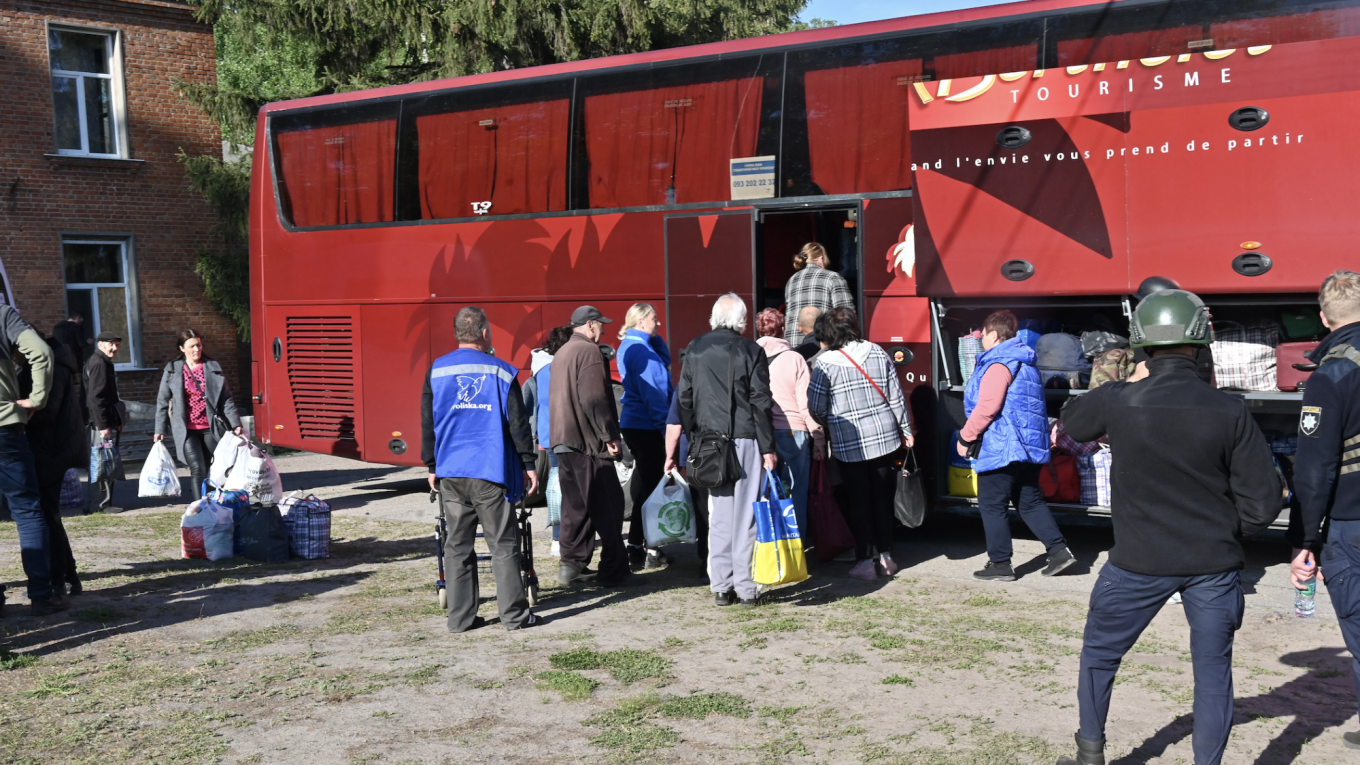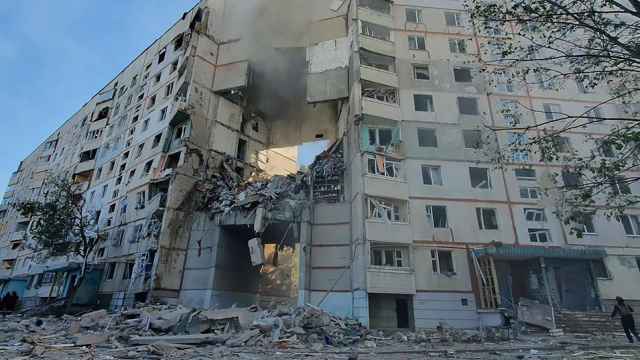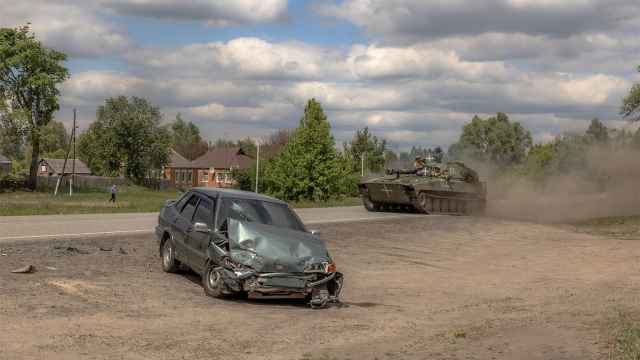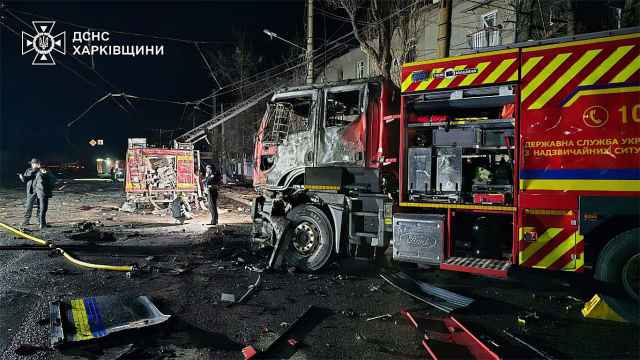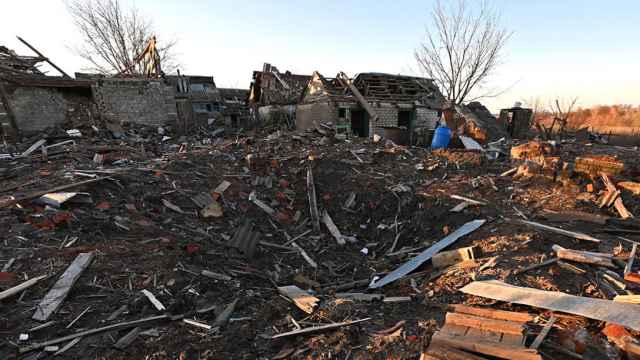Russia on Saturday said it had captured five villages in Ukraine's northeastern Kharkiv region during a surprise ground offensive that prompted mass evacuations, as President Volodymyr Zelensky made an urgent call for military aid.
Moscow's Defense Ministry said its troops had "liberated" five villages in Ukraine's Kharkiv region near the Russian border — Borysivka, Ohirtseve, Pletenivka, Pylna and Strilecha — as well as taking one village in the Donetsk region.
Ukraine's Defense Ministry said Friday Russia had launched a surprise attack on the Kharkiv region, making small advances into a border zone from where it had been pushed back nearly two years ago. Later Saturday, Ukraine's military command said that Russia's ground troops had had air support.
Zelensky said in his nightly address on Saturday that Ukrainian troops had been carrying out counterattacks in border villages in the Kharkiv region.
"Disrupting Russian offensive plans is now our number one task," he said.
There has been "heavy fighting" in the border area and 1,775 people have been evacuated, Kharkiv regional governor Oleh Syniehubov wrote on social media earlier Saturday.
Two men aged 50 and 48 were killed and two wounded by guided aerial bomb attacks on the town of Vovchansk close to the border, Syniehubov added later. He posted video from Vovchansk showing windows blown out of a multi-story block of flats and shattered houses on fire.
The governor insisted there was "no threat of a ground operation" for the city of Kharkiv, Ukraine's second largest.
Groups of people fleeing the border area were arriving in vans and cars loaded with bags at a reception center for evacuees near Kharkiv, AFP journalists saw.
'Impossible to live there'
Evacuees — many of them elderly — received food and medical assistance and could sleep in bunk beds.
One 61-year-old woman, Lyubov Nikolaieva, told AFP she had fled the border village of Lyptsi along with her 81-year-old mother.
"It's impossible to live there," said Nikolaieva, adding that her family "stayed there until the last moment" without gas or electricity.
"There is constant incoming fire: those guided aerial bombs and mortar shells whistling overhead. It became very scary," she said.
An aid worker helping evacuate residents, Dmytro Tkachenko, 37, told AFP: "There is a really hard, difficult situation in the directions of Vovchansk and Lyptsi.
"There is some (troop) movement and at the moment, it really complicates the evacuation from these areas, because it's really dangerous."
'Saves lives'
The Kharkiv region has been mostly under Ukrainian control since September 2022.
Zelensky said Saturday troops must "return the initiative to Ukraine" and urged Kyiv's allies to speed up arms deliveries.
"Every air-defence system, every anti-missile system is literally what saves lives," Zelensky said.
"It is important that our partners support our soldiers and Ukrainian resilience with timely deliveries — really timely ones," he added.
"The package that really helps is the weapons brought to Ukraine, not just the announced ones."
Ukrainian forces have multiplied attacks inside Russia and Russia-held areas of Ukraine, particularly on energy infrastructure.
Also Saturday, a missile strike killed three people when it hit a restaurant called Paradise in the Russian-held city of Donetsk, eastern Ukraine.
The attack using U.S. HIMARS precision rocket launchers killed two diners and a restaurant worker and wounded nine, officials from the Russian-backed administration said.
'Not a big offensive'
Officials in Kyiv had warned for weeks that Moscow might try to attack its northeastern border regions, pressing its advantage as Ukraine struggles with delays in Western aid and manpower shortages.
Ukraine's military said it had deployed reserve units "to strengthen the defense in these areas of the front."
Military expert Olivier Kempf told AFP Saturday that Russia's ground operation was most likely aimed at creating a buffer zone near its Belgorod region, recently raided by pro-Ukrainian units, or diverting Ukraine's resources from the Donetsk region.
"Twenty-four hours after the launch of the operations, it doesn't look like a big offensive," said the associate fellow at the Foundation for Strategic Research, a French think tank.
Washington announced a new $400 million military aid package for Kyiv hours after the offensive began, and said it was confident Ukraine could repel any fresh Russian campaign.
A Message from The Moscow Times:
Dear readers,
We are facing unprecedented challenges. Russia's Prosecutor General's Office has designated The Moscow Times as an "undesirable" organization, criminalizing our work and putting our staff at risk of prosecution. This follows our earlier unjust labeling as a "foreign agent."
These actions are direct attempts to silence independent journalism in Russia. The authorities claim our work "discredits the decisions of the Russian leadership." We see things differently: we strive to provide accurate, unbiased reporting on Russia.
We, the journalists of The Moscow Times, refuse to be silenced. But to continue our work, we need your help.
Your support, no matter how small, makes a world of difference. If you can, please support us monthly starting from just $2. It's quick to set up, and every contribution makes a significant impact.
By supporting The Moscow Times, you're defending open, independent journalism in the face of repression. Thank you for standing with us.
Remind me later.


